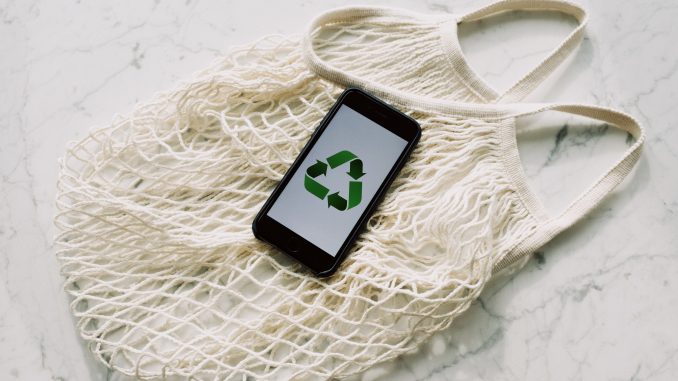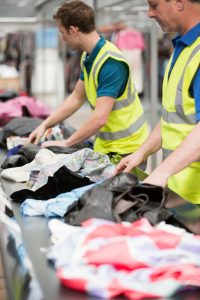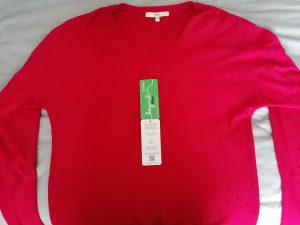
Eco Fashion or eco-friendly fashion is a growing trend among young and old. Sustainability and ethical fashion have been major buzz words in the industry over the last few years, as certain fashion brands are renowned for their poor standards in these areas.
Fast fashion has been catastrophic for people and the planet, so we are going to explore some of the key areas of concern, namely the abuse of human rights and the waste of resources and pollution. Hopefully this will encourage you, as a consumer, to reduce the demand for sustainable clothing and ethical clothing products that are more accessible via online eco shops.
Abuse of Human Rights for Cheap and Fast Fashion
Sadly, the abuse of human rights is common in the fashion industry. In many places around the world, workers are paid extremely low wages which are often unpredictable so that they can’t manage their finances. Employees often work in terrible conditions and they feel they have no choice but to put up with verbal, physical and sexual abuse in order to hold onto their job as in their countries job security is not a given.
In order to provide fashion products that are cheap, workers in foreign countries are exploited and taken advantage of. Pretty Little Thing’s recent up to 99% off sale caused a backlash, as product prices were cut massively, with a £70 coat being sold for just 7p. The fact that items could be sold for this price without putting Pretty Little Thing out of business is truly shocking, as it alludes to the quality of the clothing and also how undervalued people working in their supply chain are.

Whilst sustainable clothing is much more expensive and not necessarily affordable for everyone, the culture that has arisen through fast fashion is scary. People buy outfits, wear them once and then throw them away a couple of months later. So, if you can afford sustainable and ethical clothing that’s fantastic, otherwise make sure that before you buy something, you will wear it 30+ times.
Try to buy diverse items that can be mixed and matched to make many different outfits, like a pair of black jeans or a men’s graphic t-shirt that can be dressed up or down. Several clothing items can be upcycled and reused so that they don’t end up in the landfill. Then, if you do need to get rid of it, please take the item to a charity shop or sell it online. If it is a bit worn, you can find places that take bits of fabric to use for all sorts of things as you can see in our eco-friendly products list.
Waste of Resources and Use of Non-Renewable Energy
Firstly, the fashion industry wastes excessive amounts of fabric. Fast fashion companies using cheap poor quality fabrics simply don’t need to maximise the use of their fabrics as they make more than enough profit. This leads to fabric scraps going straight to landfill and releasing dangerous greenhouse gases over a period of years. It probably isn’t worth the companies time to hold on to the fabric and repurpose it, which causes a major issue.
Another significant issue is water wastage. Not only are billions of cubic metres of water used in the fashion production each year, but it is then also released once it has been polluted. This can destroy biodiversity massively within ecosystems and also contaminate the food chain and drinking water. As you can imagine, this is massively unsafe both for the environment as well as humans.
Finally, the majority of fashion production still relies on non-renewable energy, meaning that the damaging traditional methods of energy production are used on a mass scale to fuel one of the largest industries in the world. One of the major issues here is transportation. This is one of the leading sources of pollution, as burning fossil fuels like diesel and petrol releases carbon dioxide. The amount of transportation needed in the fashion industry is horrendous, to transfer materials from their place of origin to factories to be made into fabrics, then being taken to another factory to be made into clothing, before being packaged and then shipped to the consumer. Don’t forget that it is highly likely this chain will involve multiple different countries.
Consumer Behaviour is the main Catalyst for Change
As a consumer, there is something you can do to help reduce this environmental and human rights issue. As mentioned before, when you are thinking of getting rid of any old clothes, shoes, accessories or any garment, make sure that you either sell it or give it to a charity shop. Some fashion shops like H&M also take used clothes for a voucher. This will help reduce the demand for new clothing, so you will be doing your bit!
Something you think no one will want could be just what they are looking for. If you sell items on platforms like eBay, you could save the money and invest it in sustainable and ethical clothing that is good for people and the planet. In the long term, you will also save money, as you will find sustainable clothing lasts far longer than fast fashion alternatives. Additionally, if you buy second hand clothes, this will also help to reduce demand.
Look for local companies who use sustainable materials and openly talk about their ethical promises. You will be supporting local businesses who care about people and the environment, so it is worth spending slightly more in order to get good quality and support ethical businesses.
I also want to highlight that eco fashion does not have to be expensive. I recently found this beautiful and extremely comfortable jumper in the sale at fashion retailer Next for just £8:

As the label shows, this jumper is made from eco-responsible viscose and you can learn more about how it is sourced and manufactured to meet the EU Ecolabel standards here: https://www.ecovero.com/. It is reassuring to see how many fashion retailers are paying attention to this and partner up with such manufacturers:

Final Thoughts
The impact that the fashion industry has on the world is overwhelming and scary, yet you can make choices as a consumer that will help to accelerate the change. If you take anything away from this, make sure it is the following three things:
- Buy from local, sustainable companies
- Sell old clothes or take them to charity shops
- Buy second hand or upcycle and reuse clothes
These small changes can make a huge difference and you can be trendy and eco-friendly on Instagram with being an ethical consumer.
![]()
Author Profile
- Online Media & PR Strategist
- Blogger and Educator by Passion | Senior Online Media & PR Strategist at ClickDo Ltd. | Fascinated to Write Lifestyle Blogs in News & Education I have completed a journalism summer course at the London School of Journalism and manage various blogs.
Latest entries
 BusinessMay 15, 2024How Software Influences Sustainable Practices in Cloud Computing
BusinessMay 15, 2024How Software Influences Sustainable Practices in Cloud Computing EnvironmentApril 22, 2024The Potential for Geothermal Energy in the UK Heats Up
EnvironmentApril 22, 2024The Potential for Geothermal Energy in the UK Heats Up TechnologyApril 20, 2024Do You Want to Become a Sustainable Investor? A Beginner’s Guide to Sustainable Investing
TechnologyApril 20, 2024Do You Want to Become a Sustainable Investor? A Beginner’s Guide to Sustainable Investing Green Expert GuidesApril 5, 2024The Economics of Solar: Understanding Feed-in Tariffs and Energy Trading
Green Expert GuidesApril 5, 2024The Economics of Solar: Understanding Feed-in Tariffs and Energy Trading






Leave a Reply
You must be logged in to post a comment.